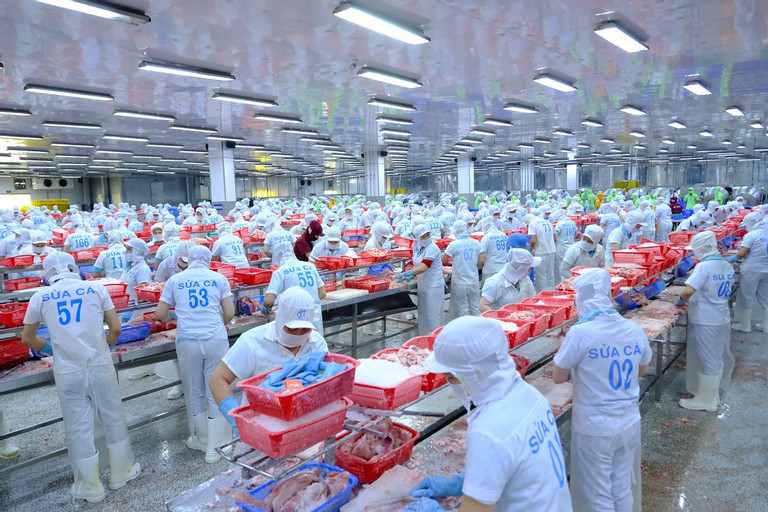
Statistics show positive growth in exports to large FTA markets such as the EU and CPTPP (the Comprehensive and Progressive Agreement for Trans-Pacific Partnership) (Canada and Mexico) and the UK, but the proportion of the markets in Vietnam’s total export turnover remains modest. In some provinces, the figures are less than 10 percent.
The preference utilization rates (PUR) are still below expectations – 5 percent for CPTPP, 26 percent for EVFTA (EU-Vietnam FTA), and 24 percent for UKVFTA (UK-Vietnam FTA).
Foreign invested enterprises (FIEs) still make up the majority of Vietnam’s export turnover of high-revenue products such as footwear, phone and phone accessories, and machines and equipment.
Meanwhile, Vietnamese enterprises still mostly do outsourcing, and export raw materials or half-finished products. The brand building and positioning for made-in-Vietnam products exported to choosy markets still cannot get appropriate attention.
MOIT said that the number of enterprises exporting products to FTA markets remains modest. The number of import companies is lower than the number of export companies.
Some enterprises have products exported to the markets, but they can only participate in certain stages of the supply chains.
The ability to comply with quality requirements, food hygiene safety and technical requirements of Vietnamese exports is still limited, especially when many import markets have raised their technical standard requirements, and installed more non-tariff barriers.
In general, businesses don’t take the initiative to improve and satisfy the requirements to be eligible for preferences stated in FTAs.
“Vietnam’s export products are mostly raw materials, or products outsourced by foreign importers. The number of Vietnamese enterprises which could build strong brands for exports to FTA markets remains modest,” MOIT noted.
Many conferences and workshops have been organized about FTAs, but the events have overlapped in content.
In 2022 alone, as many as 347 events related to the issue were held. Meanwhile, many businesses did not pay attention to the conferences and did not participate in the events.
Regarding solutions, MOIT thinks it is necessary to speed up compilation and issuance of legal documents on FTA commitments, and carry out periodic reviews to discover the problems and settle them.
The ministry said it wants to join forces with other ministries, branches and localities to build an ecosystem to take full advantage of the opportunities from FTAs.
It is also necessary to reserve capital to support enterprises to take full advantage of FTAs, especially innovative small and medium sized enterprises; and seek legal financial sources from international financial institutions.
Luong Bang